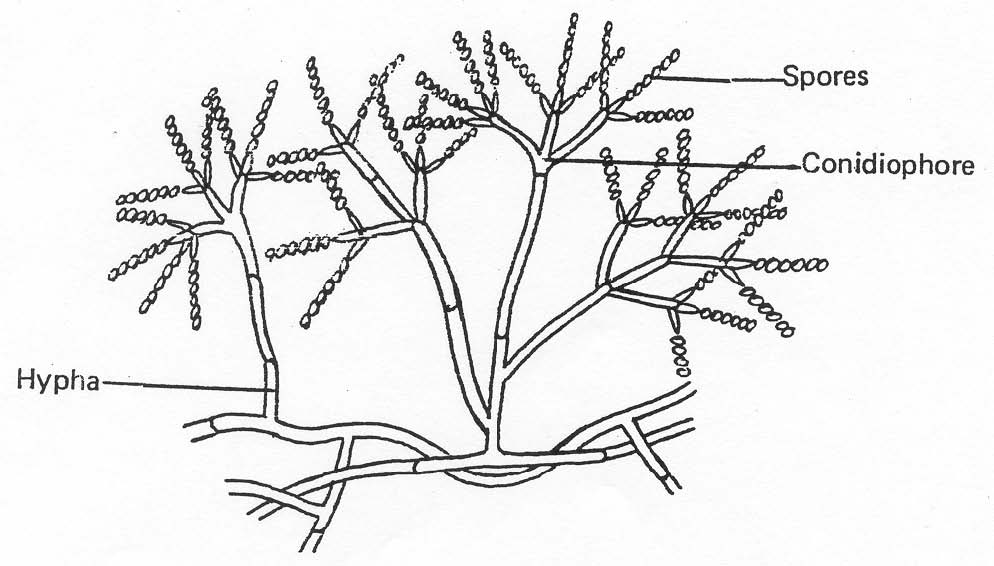Principles of Epidemiology and Microbiology
Lesson 2: Public Health Microbiology
Section IV: Fungi
2-18
2-18. PHYSIOLOGY OF FUNGI
a. Nutrition. Most fungi contain complex enzymes and other chemical substances which, when diffused into the host, break down the complex substances available--wood, vegetation, leather, bread, and so forth--into simpler substances that can be used for food. The chemical products of digestion are, therefore, completed outside of the organism, and the fungus absorbs the end products.
b. Reproduction. Fungi reproduce sexually or asexually, or both, depending upon the species and the environmental conditions. As the name implies, sexual reproduction is the result of the union of two spores. Most fungi reproduce both sexually and asexually. Those that produce only asexual spores are known as Deuteromycetes Fungi imperfecti. This group is important because it contains most of the pathogenic fungi. The yeasts reproduce both by spores and by a process known as budding, which is similar to binary fission. The yeast cell forms a small knoblike protrusion, or bud (figure 2-9), that separates from the mother cell and grows until it reaches full size, at which time the process is repeated.
c. Growth. Fungi grow well under the same conditions that favor the growth of bacteria--warmth and moisture. It is for this reason that fungal infections pose a serious problem to troops in the tropics. As the temperature decreases, fungal activity also decreases; however, the spores are very resistant to cold, some surviving freezing temperatures for long periods of time. On the other hand, fungi are easily killed at high temperatures.
Figure 2-9. Typical mycelium of a fungus.


